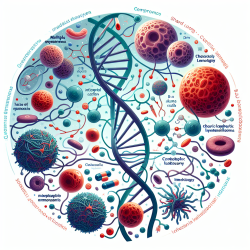Introduction: Overcoming Burnout in IEP Planning
As speech language pathologists, the dedication to improving children's communication skills is at the heart of what we do. However, the process of Individualized Education Program (IEP) planning and meetings can often feel overwhelming, leading to professional burnout. At TinyEYE, we believe in harnessing the power of data-driven decisions to alleviate this burden and create better outcomes for the children we serve.
Understanding the Challenges
IEP planning involves a meticulous process of assessing each child's unique needs, setting achievable goals, and crafting a plan that aligns with those objectives. The time and energy required to prepare for IEP meetings can be immense, especially when compounded by the emotional weight of ensuring every child receives the best possible care. This can lead to feelings of burnout, which, if left unaddressed, can affect the quality of care provided.
Data-Driven Strategies for Effective IEP Planning
Utilizing data-driven strategies can significantly streamline the IEP planning process, allowing speech language pathologists to focus on what truly matters: the children. Here are some key strategies:
- Utilize Comprehensive Evaluations: Conduct thorough speech therapy evaluations to gather data on each child's current abilities. This will help in setting realistic and measurable goals.
- Leverage Technology: Online therapy platforms, like those provided by TinyEYE, offer tools that can help track progress and manage data efficiently, reducing the administrative load.
- Collaborate with Stakeholders: Engage with teachers, parents, and other professionals to gather insights and ensure a holistic approach to each child's development.
- Set Clear Objectives: Define specific, measurable, achievable, relevant, and time-bound (SMART) goals for each child to provide clear direction and purpose in therapy sessions.
Enhancing IEP Meetings with Data
IEP meetings are an opportunity to showcase the progress a child has made and to adjust plans as needed. Presenting data in these meetings can enhance communication and decision-making:
- Visualize Progress: Use charts and graphs to present data visually, making it easier for all stakeholders to understand a child's progress.
- Highlight Achievements: Celebrate milestones achieved by the child, reinforcing the positive impact of the therapy.
- Facilitate Open Discussions: Use data to facilitate discussions on what strategies are working and what needs adjustment, ensuring a collaborative approach to the child's education.
Conclusion: A Path to Renewal
By adopting a data-driven approach to IEP planning and meetings, speech language pathologists can reduce the feeling of burnout and enhance the quality of care provided. At TinyEYE, we are committed to supporting you in this journey, ensuring that every child receives the individualized attention they deserve. Together, we can transform challenges into opportunities for growth and success.










